Green Lake Park
Cuihu Park is located at the foot of Luofeng Mountain in Kunming City, the West foot of Wuhua Mountain, opposite the main entrance of Yunnan University, formerly known as Haizi. It was originally a lake in Dianchi, and later became a Wangqing lake because of the decline of water level.
Cuihu Lake is a green gemstone in Kunming City with its bright water, shady trees, wave-centered buildings and beautiful surroundings. Enjoy the name of the jade in the city.
Before Yuan Dynasty, the water level of Dianchi Lake was high, and it belonged to the small lake bay outside the city. There were many paddy fields, vegetable gardens and lotus ponds, so it was called "Caihaizi". Because there are nine springs in the East and confluence into pools, also known as "Kowloon pond".
In the early years of the Republic of China, it was converted into a garden and planted willows in the garden.
Green Lake Park is located in the city of Kunming under the mountain of Lo Feng, opposite the main entrance of Yunnan University. Although the area is not too large, it is very distinctive. It was originally a lake in Dianchi, and later became a Wangqing lake because of the decline of water level. Ever since the Ming Dynasty, all the administrative officials of Yunnan have been building the pavilion. Because of the main characteristics of weeping willow and clear water, it was officially named Cui Hu at the beginning of this century. It is famous for its "Spring Dawn". People call it an emerald inlaid in the city of Kunming.
In the park, the Ruan dike (built by Ruan Yuan, governor of Yunnan and Guizhou in 1834) runs through the north and south, and the Tang dike (built by Tang Jiyao, then commander-in-chief of the founding army of Yunnan, Sichuan and Guizhou provinces of Sun Yat-sen, in 1919), divides the lake into five scenic spots; the scenic spot in the lake center is mainly composed of Qing Dynasty buildings, such as the pavilion in the center of the lake and the observation fish tower; it is especially worthwhile. Since 1985, a large number of seagulls have flown from Siberia to Kunming every winter. Some of them have lived in the Cuihu Lake. This also fully illustrates the four seasons of spring in Kunming. To visit Cuihu, you can take No. 1 bus to get off at Yunnan University Station, or take No. 101 bus to get off at Cuihu, or take No. 5 bus, No. 23 bus, No. 4 bus to get off at Xiaoximen Station on foot.
The Luofeng Mountain near the Cuihu Lake is the Kunming Zoo, and the Yuantong Temple is nearby. Interested tourists can walk there.
Cuihu Park is the most beautiful free park in Kunming downtown. Cuihu Park is located at the foot of Luofeng Mountain in Kunming downtown area, the Western foot of Wuhua Mountain, opposite the main entrance of Yunnan University, formerly known as Caihaizi. It was originally a lake in Dianchi, and later became a Wangqing lake because of the decline of water level. There are also nine springs in Northeast China, also known as "Kowloon pond". Cuihu Lake is a green gemstone in Kunming City with its bright water, shady trees, wave-centered buildings and beautiful surroundings. It enjoys the reputation of "jade in the city".
It is Ruan dike, which runs across the north and South in the Green Lake Park. It was built by the governor of Yunnan and Guizhou Province in 1834. Tang Dynasty was built in 1919 by Tang Jiyao, then commander-in-chief of the three provinces of Yunnan, Sichuan and Guizhou. The two long dike is four. The willows are planted on the banks of the dyke, where the seeds are planted in the lake, and the willows are mutually matched. Two long levees divide the lake into five scenic spots-Huxindao scenic spot is dominated by Qing Dynasty buildings such as Huxindao Pavilion and Guanyulou; Shuiyuexuan and Golden Fish Island in the southeast; Zhulin Island and Jiulongchi in the northeast; Huludao and Jiuqu Bridge in the south; Haixindao Pavilion in the west.
Especially worth mentioning is that every winter, thousands of northern red-billed gulls fly to the lake to winter, playing with the water, fighting for food bait, to add endless fun to the lake. This is due to the warmth of the four seasons in Kunming, suitable for seagulls winter, coupled with the Kunming people see gulls as friends, love seagulls, the Kunming municipal government also prohibits the capture of seagulls, not to set off firecrackers to frighten seagulls. In this way, red-billed gulls and Kunming people formed a "friendship" every November, they flew to Kunming for winter, the next year, March-April, they left Kunming and flew to northeast China and Siberia and other places.
At this time, visiting gulls and visiting gulls will become a great pleasure for Kunming people and many foreign tourists. In winter and spring, tens of thousands of red-billed gulls gather in Cuihu Lake. Thousands of people feed the gulls, making it a great sight of the Spring City.
"Cui Hu" area of 21 hectares, the water surface accounted for 15 hectares. The two long willow dike is "+" which converge on the garden heart and divides the whole lake into four. The north-south transverse dike is called "Ruan dike". It was built by Yunnan Governor Ruan Yuan during the Daoguang period in imitation of the beautiful charm of "Su dike" in the West Lake. The East-West longitudinal dike was called "Tang dike" and was built during the Republic of China. Two the junction of the embankment is the small island of the lake, and the center of the lake is the center of the Lake Pavilion. Huxin Pavilion is also called "Biyi Pavilion". The Pavilion is beautiful in appearance, with yellow tiles flying eaves, and is decorated with the spring scenery of the Cuihu Lake. There are two inner courtyards in the pavilion, which are the places for various exhibitions.
On the west side of Huxin Pavilion, there are Lianhua Zen Garden and Release Pool built in Jiaqing Period, which is the famous "Haoshang Fish Viewing" place. Now the Zen Garden has become an amusement palace, and the "Release Pool" has become a water garden; in the Northwest corner, there are "Laishang Tower" with a drifting ice rink; in the southwest corner, there is "Huludao"; in the Southeast corner, there is a three and a half palm tall. The big garden of the island is "Shuiyue Xuan" with flourishing flowers and trees, and there is "Zhichun Pavilion" in the Northeast corner, where people gather to sing folk songs at festivals, which has a special interest. The beauty of today's Lake Cuihu adds a snowy red-billed gull, which flocks from the far north for winter from November to March of the following year, once a year, uninterrupted. "Green lake view gulls" has become one of the most popular landscapes in Kunming.
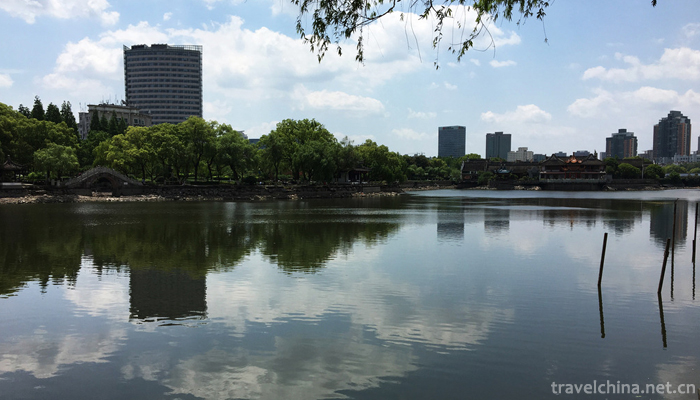
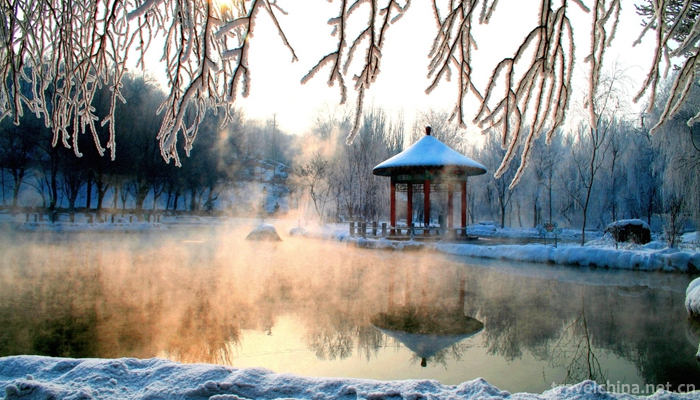
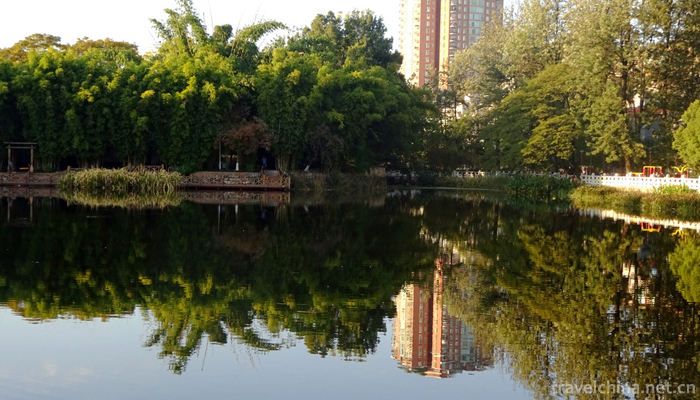
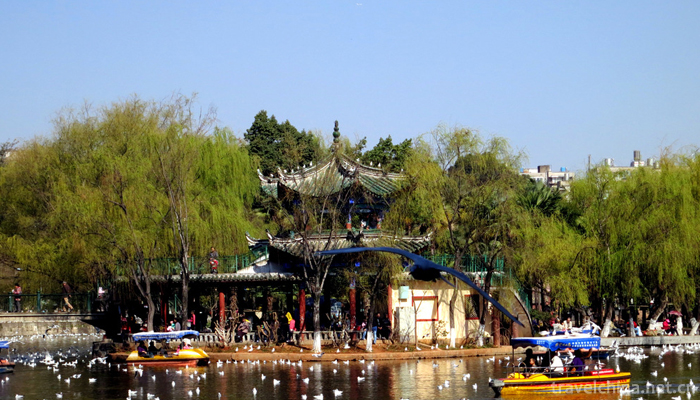
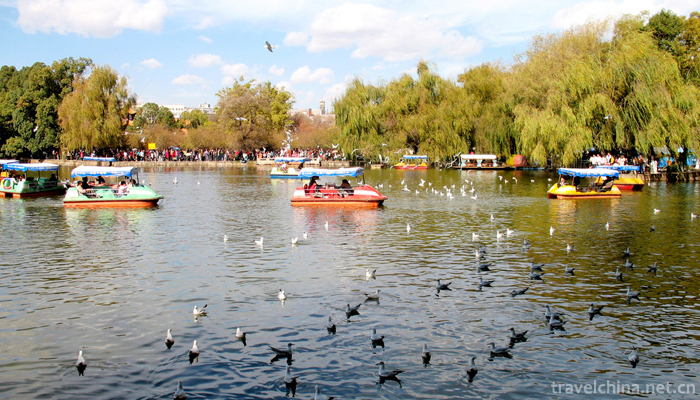
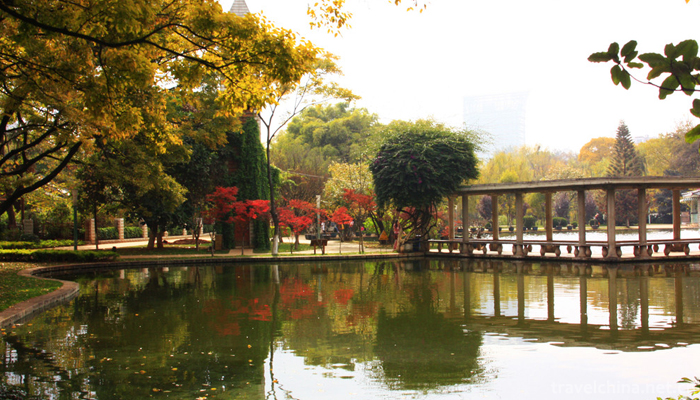
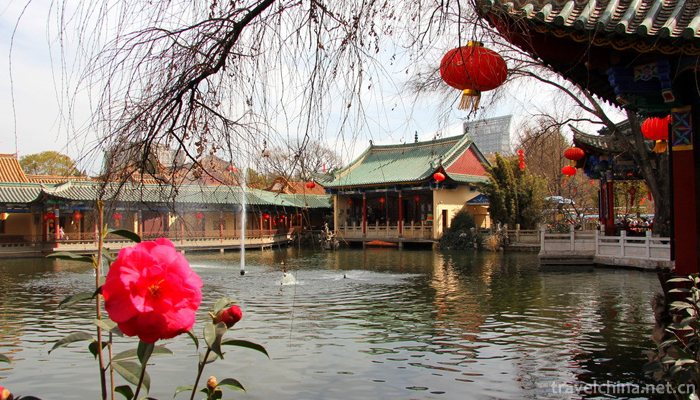
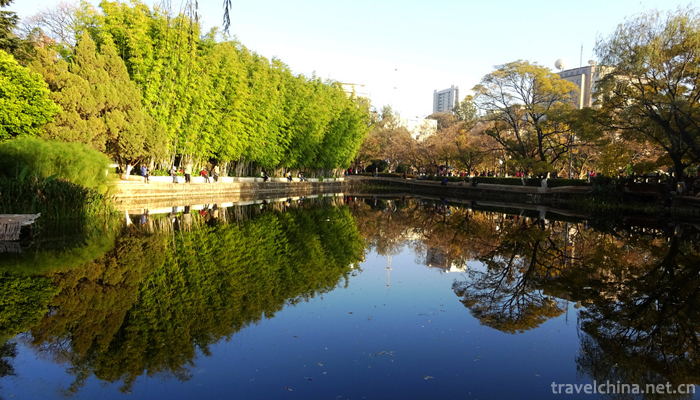
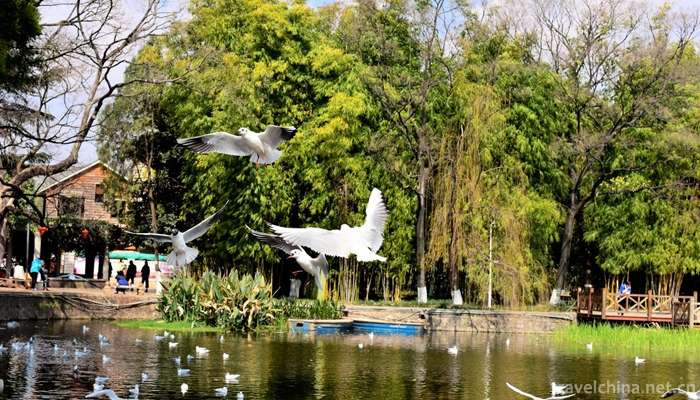
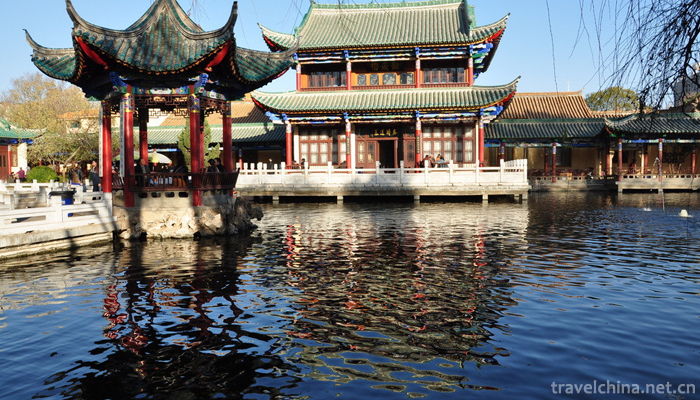
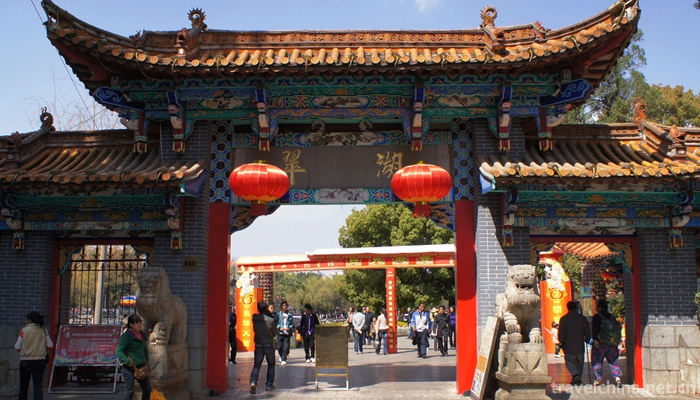

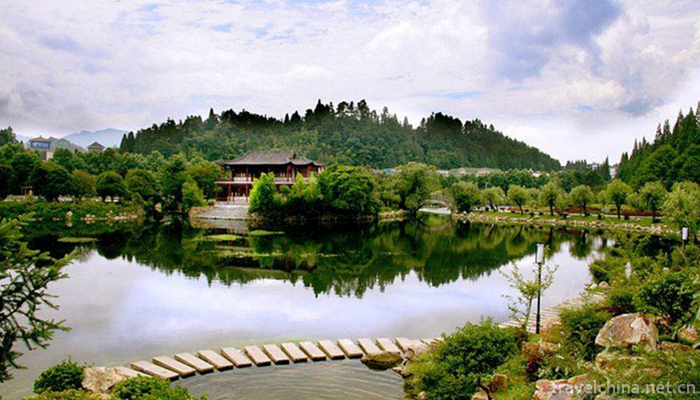
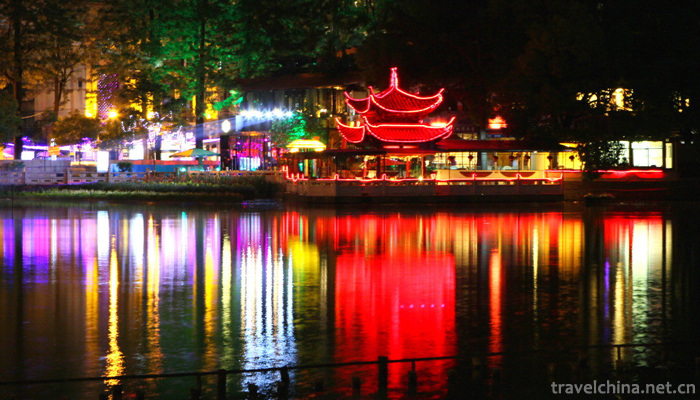
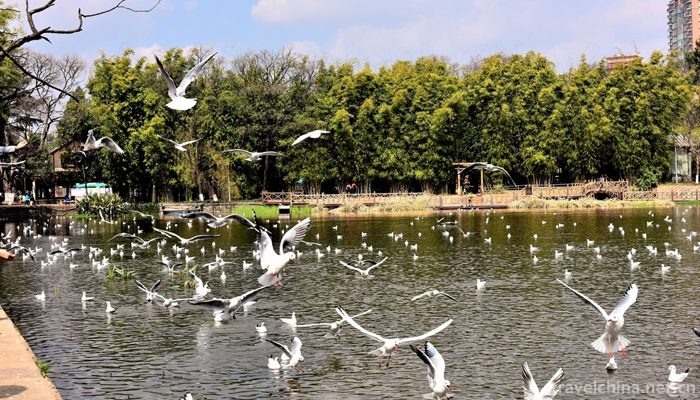

-
1.The Bund
The Bund, located on the Huangpu river bank in Huangpu District, Shanghai
Time 2018-10-12 -
3.Gold medal suckling pig
Roasted Suckling Pig. Characteristic: It has won the "Golden Ding Award" by the national commercial department. It is a precious Cantonese dish at the banquet.
Time 2018-11-14 -
4.Western Royal Tombs of the Qing Dynasty
Xiling Tomb of Qing Dynasty is located at the foot of Yongning Mountain, 15 kilometers west of Yixian Town, Baoding City, Hebei Province, more than 120 kilometers away from Beijing
Time 2019-02-07 -
5.The Legend of the Cloth Bag Monk
From the end of Tang Dynasty to the Five Dynasties, the monk of Fenghua, Ningbo City, Zhejiang Province, named Tingzi, was an eminent monk of Hou Liang in the Five Dynasties
Time 2019-04-04 -
6.Hubei storytelling
The evaluation of books in Hubei Province is a traditional art of rap and singing in Hubei Province. Popular in northern China, as an independent variety of storytelling,
Time 2019-05-03 -
7.Jingbian donkey
Jingbian Donkey Running, a traditional dance in Jingbian County, Yulin City, Shaanxi Province, is one of the national intangible cultural heritage.
Time 2019-05-08 -
8.Cutting Copper Dus Cutting Copper
Painting inscriptions on bronze pots, smooth lines; beautiful paintings of mountains and rivers on bronze plates, such as immersion... In many people's eyes, Du's bronze engraving,
Time 2019-05-09 -
9.Wenshui Tiaozi
Wenshui Biaozi is an ancient and unique traditional folk music art spread in Wenshui County, Shanxi Province. It is named for its special copper cymbals commonly known as "Biaozi" in perform
Time 2019-06-29 -
10.Diexi earthquake site
Diexi earthquake site is located 2.5 km southeast of Jiaochang Township, Maoxian County, on the second grade platform on the East Bank of Minjiang River
Time 2020-11-07 -
11.About Ding Zhen picture
Zhaxi Dingzhen (Chinese Name: Ding Zhen), born in 2000, lives in Litang County, Ganzi Prefecture, Sichuan Province.
Time 2020-12-06 -
12.Technical requirements of Chinese embroidery
The technical requirements of embroidery are: smooth, even, flat, even and clean. Smooth refers to straight straight straight line and smooth curve; neat refers to neat pointer trace and no uneven edge; flat refers to accurate gesture, plain
Time 2020-12-12